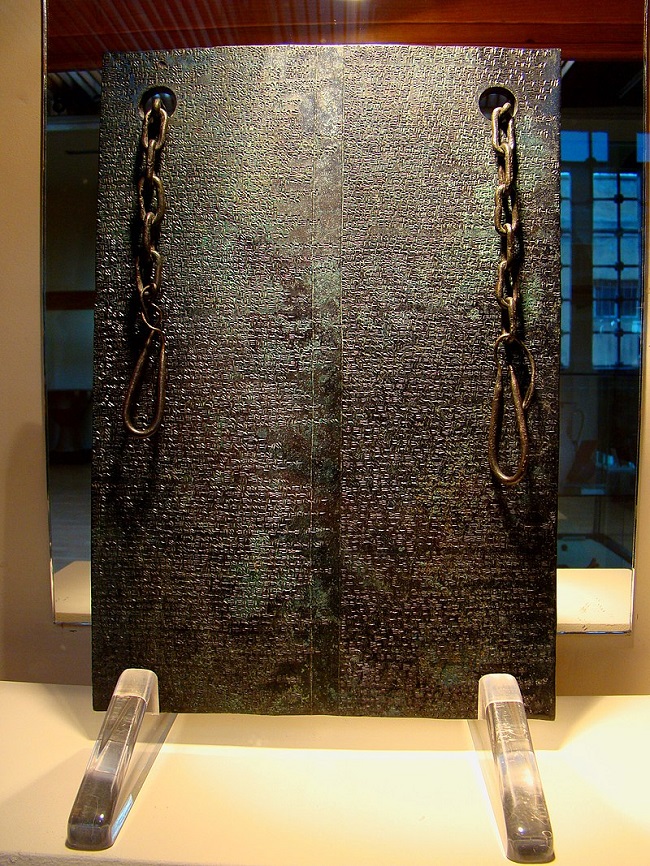
-
Published: 07 March 2023

The Bronze Age is a historic period, lasting approximately from 3300 BC to 1200 BC, characterized by the use of bronze, the presence of writing in some areas, and other early features of urban civilization. The Bronze Age is the second principal period of the three-age system proposed in 1836 by Christian Jürgensen Thomsen for classifying and studying ancient societies and history.
Edited by |CHRISTIAN MEGAN
HISTORY section- CJ journalist
March 7, 2023- LONDON
An ancient civilization is deemed to be part of the Bronze Age because it either produced bronze by smelting its own copper and alloying it with tin, arsenic, or other metals or traded other items for bronze from production areas elsewhere. Bronze is harder and more durable than the other metals available at the time, allowing Bronze Age civilizations to gain a technological advantage.
While terrestrial iron is naturally abundant, the higher temperature required for smelting, 1,250 °C (2,280 °F), in addition to the greater difficulty of working with the metal, placed it out of reach of common use until the end of the second millennium BC.
Tin's low melting point of 231.93 °C (449.47 °F) and copper's relatively moderate melting point of 1,085 °C (1,985 °F) placed them within the capabilities of the Neolithic pottery kilns, which date back to 6,000 BC and were able to produce temperatures greater than 900 °C (1,650 °F).
Copper and tin ores are rare since there were no tin bronzes in Western Asia before trading in bronze began in the 3rd millennium BC. Worldwide, the Bronze Age generally followed the Neolithic period, with the Chalcolithic serving as a transition.
Bronze Age cultures differed in their development of writing. According to archaeological evidence, cultures in Mesopotamia (cuneiform script) and Egypt (hieroglyphs) developed the earliest practical writing systems.
Metal use
The period is characterized by the widespread use of bronze, even if only by elites in its early part, though the introduction and development of bronze technology were not universally synchronous. Human-made tin bronze technology requires set production techniques.
Tin must be mined and smelted separately, then added to hot copper to make bronze alloy. The Bronze Age was a time of extensive use of metals and of developing trade networks.
A 2013 report suggests that the earliest tin-alloy bronze dates to the mid-5th millennium BC in a Vinča culture site in Pločnik (Serbia), although this culture is not conventionally considered part of the Bronze Age. The dating of the foil has been disputed
Near East;
The Bronze Age in the Near East can be conveniently divided into Early, Middle, and Late periods. The dates and phases below are solely applicable to the Near East and thus not applicable universally.
The ancient Near East was the home of early civilizations within a region roughly corresponding to the modern Middle East: Mesopotamia, ancient Egypt, ancient Iran, Anatolia/Asia Minor, the Armenian highlands, the Levant, Cyprus, and the Arabian Peninsula.
Western Asia and the Near East were the first regions to enter the Bronze Age, which began with the rise of the Mesopotamian civilization of Sumer in the mid-4th millennium BC. Cultures in the ancient Near East (often called one of "the cradles of civilization") practiced intensive year-round agriculture, developed writing systems, invented the potter's the wheel, created centralized governments (usually in form of hereditary monarchies), written law codes, city-states, and nation-states and empires, embarked on advanced architectural projects, introduced social stratification, economic and civil administration, slavery, and practiced organized warfare, medicine, and religion. Societies  in the region laid the foundations for astronomy, mathematics, and astrology.
in the region laid the foundations for astronomy, mathematics, and astrology.
Anatolia ;
The prehistory of Anatolia stretches from the Paleolithic era through to the appearance of classical civilization in the middle of the 1st millennium BC. It is generally regarded as being divided into three ages reflecting the dominant materials used for the making of domestic.
The Hittite Empire was established in Hattusa in northern Anatolia in the 18th century BC. In the 14th century, BC the Hittite Kingdom was at its height, encompassing central Anatolia, southwestern Syria as far as Ugarit, and upper Mesopotamia. After 1180 BC, amid general turmoil in the Levant conjectured to have been associated with the sudden arrival of the Sea Peoples, the kingdom disintegrated into several independent "Neo-Hittite" city-states, some of which survived until as late as the 8th century BC.
Arzawa in Western Anatolia during the second half of the second millennium BC likely extended along southern Anatolia in a belt that reaches from near the Turkish Lakes Region to the Aegean coast. Arzawa was the western neighbor—sometimes a rival and sometimes a vassal—of the Middle and New Hittite Kingdoms.
The Assuwa league was a confederation of states in western Anatolia that was defeated by the Hittites under an earlier Tudhaliya I, around 1400 BC.
